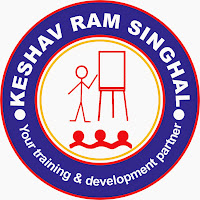Guidelines for conducting closing meeting are mentioned in clause 6.4.10 of ISO 19011:2011 standard. A closing meeting is conducted at the end of an onsite audit with an objective to present the audit findings and audit conclusions in such a manner that they are understood and acknowledged by the auditee's management.
Participants of the closing meeting: The closing meeting should be chaired by the audit team leader and attended by the following:
- audit team members,
- auditee's management,
- as applicable, personnel responsible for the functions/processes that have been audited,
- as applicable, audit client,
- as applicable, other relevant interested parties as determined by the auditee/audit client.
Introduction: The audit team leader should thank the auditee for their cooperation during the audit
Recording attendance: An attendance sheet should be retained that mentions all members present in the closing meeting.
Restate audit objectives, scope and criteria: The audit team leader should restate and confirm audit objectives, scope (auditing against ISO 9001:2015 QMS standard) and criteria of the audit during the closing meeting.
Explain situations encountered and the audit findings etc: The audit team leader should advise the situations encountered during audit, the audit findings and the method of reporting. The audit team leader should also explain that the audit only looked at a sample of the auditee's activities, therefore, the absence of recorded nonconformities does not indicate its non-existence. It may be expected that the auditee's internal performance evaluation activities will discover additional nonconformities similar to those that are found by the audit team. With regard to an action plan to address audit findings, the participants should agree on the time frame and how the audit findings should be addressed based on agreed norms. The audit team leader should also advise the degree of the effectiveness of the quality management system as per ISO 9001:2015 QMS standard in achieving the auditee's objectives, including implementation of risk-based thinking. The audit team leader should also state the familiarity of the auditee with the audit process and this will ensure communication of correct details during the closing meeting. The audit team leader should also explain (i) the possible consequences of not adequately addressing the audit findings, and (ii) related post-audit activities, such as corrective action by the auditee, review of corrective action by the audit team, addressing audit complaints, appeal process.
Audit findings and conclusions should be presented in such a manner that are understood and acknowledged by the auditee's management. if there is any difference of opinion with regard to the audit findings or conclusions between the audit team and the auditee, the same should be discussed and resolved. If difference of opinion is not resolved then the same should be recorded.
The audit team leader should conclude the closing meeting with one more thanks to all participants present in the closing meeting. Thank them for coming to the closing meeting, and also for their cooperation and assistance during the audit.
The closing meeting in an internal audit may be short and less formal, where the audit team leader may solely communicate the audit findings and audit conclusions. The closing meeting for an internal audit can be accomplished in little more than fifteen minutes. The closing meeting in an external audit should be formal as per the guidelines mentioned above, however it is suggested that such meeting should be completed within 30 -45 minutes time. It is believed that a well-organized closing meeting adds value to the audit.
Best wishes,
Keshav Ram Singhal

No comments:
Post a Comment